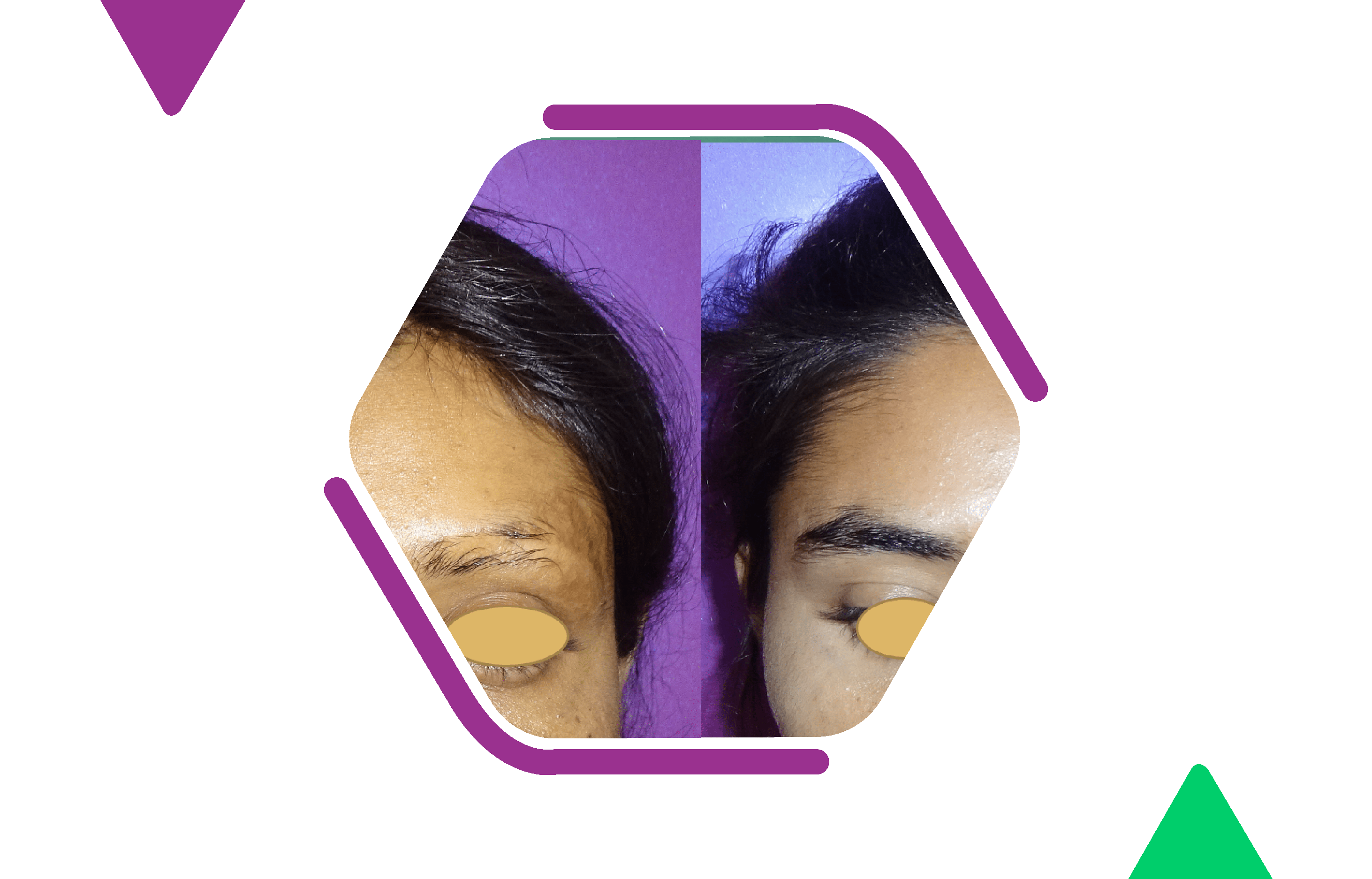Eyebrow Reconstruction

Eyebrow Reconstruction
Eyebrows play a crucial role in framing the face and have a unique anatomy with distinct components like the head, body, and tail, each with specific hair follicle directions and angles of exit. The soft and subtle nature of eyebrow hair makes it challenging to replicate. Therefore, total eyebrow reconstruction should only be considered when absolutely necessary. Common indications for eyebrow reconstruction include congenital absence, partial loss due to trauma, burns, and other factors. During the reconstruction process, very soft hair is used to create a natural-looking eyebrow, but it’s important to understand that achieving perfection may not always be possible, and some shortfall should be accepted for a more realistic outcome.
The eyebrows are not merely a cluster of hair above the eyes; they play a vital role in framing the face and enhancing facial symmetry. Their unique anatomy, with distinct components like the head, body, and tail, each with specific hair follicle directions and angles of exit, presents a complex challenge in eyebrow reconstruction. While the soft and subtle nature of eyebrow hair adds to the intricacy, total reconstruction becomes imperative only in select cases. Let’s delve deeper into the nuances of eyebrow reconstruction, its indications, techniques, and realistic expectations.
Indications for Eyebrow Reconstruction
Eyebrow reconstruction is considered in cases where natural eyebrows are absent or significantly compromised due to various factors:
- Congenital Absence: Some individuals may be born with congenital absence or hypoplasia of the eyebrows, impacting facial aesthetics.
- Trauma: Traumatic injuries, such as burns, accidents, or surgical procedures, can result in partial or complete loss of eyebrow hair.
- Medical Conditions: Certain medical conditions or treatments, such as chemotherapy, can lead to temporary or permanent eyebrow hair loss.
The Reconstruction Process
The process of eyebrow reconstruction involves careful planning and meticulous execution to achieve a natural and harmonious outcome:
- Patient Assessment: A thorough evaluation of the patient’s facial anatomy, existing eyebrow hair (if any), skin condition, and aesthetic goals is essential.
- Hair Selection: Very soft and fine hair, often harvested from inconspicuous areas like the scalp, is meticulously chosen to mimic the texture and appearance of natural eyebrow hair.
- Surgical Technique: Various techniques, including follicular unit transplantation (FUT) or follicular unit extraction (FUE), may be employed to implant the harvested hair follicles into the brow area.
- Artistic Considerations: The surgeon must meticulously recreate the eyebrow shape, density, and arch to complement the patient’s facial features and achieve aesthetic harmony.
- Postoperative Care: Following the procedure, patients are provided with detailed instructions on wound care, medication, and follow-up appointments to monitor healing and ensure optimal results.
Realistic Expectations
While modern surgical techniques and advancements in cosmetic procedures have significantly improved the outcomes of eyebrow reconstruction, it’s crucial to maintain realistic expectations:
- Natural Appearance: Despite meticulous planning and execution, achieving perfection in eyebrow reconstruction may not always be feasible. Some degree of asymmetry or imperfection should be anticipated for a more natural-looking outcome.
- Patience is Key: Eyebrow reconstruction is often a gradual process, requiring multiple sessions spaced over several months to achieve the desired density and shape. Patients must exercise patience and adhere to the recommended treatment plan.
- Professional Expertise: Choosing a qualified and experienced surgeon specializing in facial reconstruction is paramount. A skilled surgeon can navigate the complexities of eyebrow anatomy and deliver optimal results while minimizing potential risks and complications.
- Emotional Adjustment: Adjusting to the changes in appearance post-reconstruction may evoke mixed emotions. Patients should openly communicate their concerns and expectations with their surgeon and seek support from loved ones during the recovery process.
Conclusion
Eyebrow reconstruction is a specialized procedure that goes beyond mere aesthetic enhancement; it restores confidence and harmony to the face, significantly impacting an individual’s self-esteem and quality of life. By understanding the indications, techniques, and realistic expectations associated with eyebrow reconstruction, patients can make informed decisions and embark on a journey towards facial rejuvenation with confidence. At Saundarya City, our team of experienced surgeons combines technical expertise with artistic sensibility to deliver personalized eyebrow reconstruction solutions tailored to each patient’s unique facial anatomy and aesthetic goals. With a commitment to excellence and patient satisfaction, we strive to restore facial harmony and empower individuals to embrace their natural beauty with confidence and grace.
Our Services
- Hair Loss
- Causes of Hair Loss
- Clinical Features
- Laboratory Test
- Medical Treatment
- Cyclic Treatment
- PRP
- Hair Transplant
- Surgical Treatment
- FUE
- FUT
- Beard Reconstruction
- Moustache Reconstruction
- Eyebrow Reconstruction
- Side Burn Reconstruction
- Complications of Hair Transplant
- Alopecia Areata
- Telogen Effluvium
- Laser Treatment



 Book an Appointment
Book an Appointment